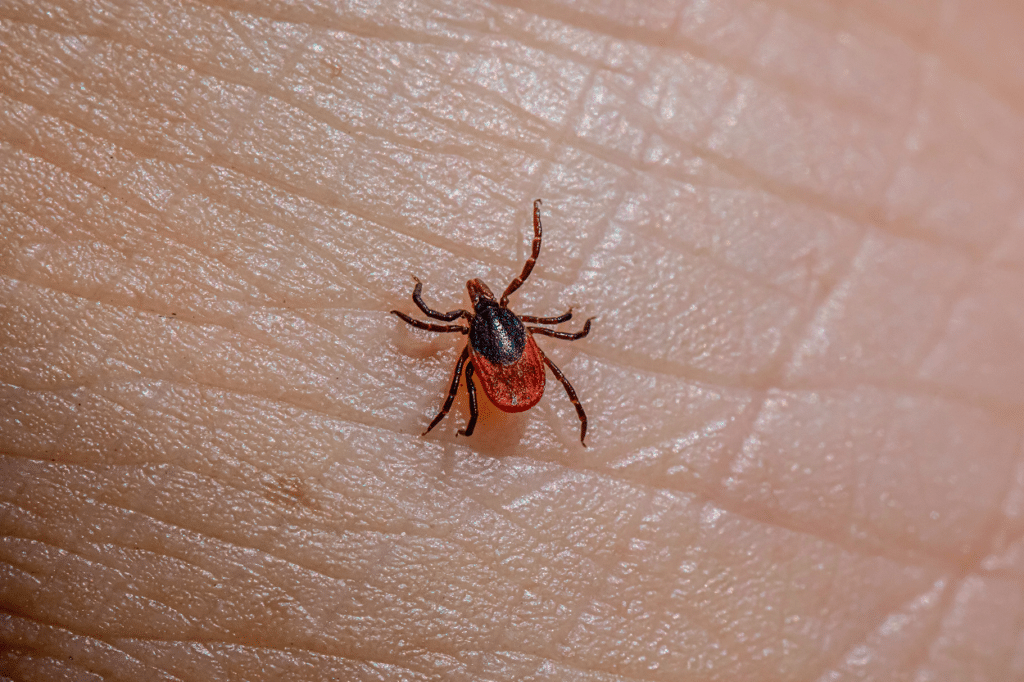Lyme disease, caused by the bacteria Borrelia burgdorferi and transmitted through ticks, has become a prominent concern in many parts of the world. According to the CDC, an estimated 500,000 people are infected with Lyme each year,1 and as the prevalence increased, the need for a protective vaccine became a priority.
Unfortunately, creating a safe vaccine for Lyme disease ended up being more complicated than one would have hoped. Let’s delve deep into the world of Lyme disease vaccines, shedding light on its history, the present scenario, and the future prospects.
1. What is Lyme Disease?
Before examining the vaccine, it’s crucial to understand the disease itself. Lyme disease is a tick-borne illness caused primarily by Borrelia burgdorferi, although other species can also be responsible in different regions. The disease manifests with a range of symptoms that can impact every organ of the body.
If left untreated it can cause debilitating symptoms, as the infection can spread to joints, the heart, and the nervous system. Timely diagnosis and treatment is crucial for symptom improvement.

2. The History of the Lyme Disease Vaccine
LYMErix: The First FDA-Approved Vaccine
The late 1990s witnessed the introduction of LYMErix, developed by SmithKline Beecham (now GlaxoSmithKline). It was the first and only Lyme disease vaccine approved by the U.S. Food and Drug Administration (FDA) for public use. It was available to individuals from ages 15 to 70 for a short while from 1998 to 2002.
“The manufacturer concluded it was to be most effective in preventing the disease in people under age 65. Half the trial participants received an initial injection, then booster shots 1 month and 12 months after. Uncertainty about the length of vaccine immunity implied that recipients might need more boosters as often as every year to prevent waning immunity.”2
How it worked: LYMErix targeted the outer surface protein A (OspA) of B. burgdorferi. The immune response generated against OspA would kill the bacteria inside the tick, preventing transmission to humans.3
Challenges faced: After receiving LYMErix many individuals believed it caused side effects resembling Lyme disease symptoms or other autoimmune responses. The Boston Globe Article posted on Saturday May 18th 2002 wrote “ in its wake, LYMErix has left hundreds of lawsuits alleging that the shot caused painful, even ruinous complications in patients.”1
In the documentary The Quiet Epidemic, Pamela Weintraub, Science Journalist and Author of Cure Unkown explains that “there was a meeting with the FDA where the chief scientist for the Connaught vaccine stated that “since LYMErix has been given out to so many people we can see that there are some very severe side effects. These are not common side effects but some of them are very bad, and I would never recommend vaccinating people with this vaccine.”1

Issues from the LYMErix vaccine that impacted the CDC diagnostic guidelines:
Dr. Richard Horowitz leading Lyme Literate Medical Doctor at Hudson Valley Healing Arts Center explains that “a western blot is a test where they actually take a blotter and on this blotter they take a drop of your blood, your serum and when they put it on the blot it starts to move.
The bacteria has proteins on the outside of its surface and your immune system recognizes some of these specific proteins, it’s like a lock and a key. If you have five of these specific proteins, that show you’ve been exposed to Lyme and you have a CDC positive western blot”1
Mary Beth Pfeiffer Investigative Journalist and author of Lyme: The First Epidemic of Climate Change explains that those in charge of creating LYMErix “decided to eliminate two of those key markers because they were going to be used in the development of the vaccine.
Those two markers would be used to spur the antibody response when you got the vaccine, so they decided they needed to remove them from the test so that if you had been vaccinated you would not test positive for Lyme disease.”1
Dr. Richard Horowitz then goes on to explain why this detail is so important. He states that “when you take away the 31 and 34 bands which are highly specific for Lyme you’re then taking away the possibility for those people who’ve not had the vaccine.” When these people that are symptomatic and are battling undiagnosed Lyme disease go to their doctor for testing this becomes problematic.
Their doctor would then test them using the Western blot and if they’ve got four out of five bands but their fifth band happens to be the 31 or 34 they would call that a CDC negative western blot yet they do in fact have Lyme disease.
While the LYMErix vaccine has been taken off the market since 2002, and we have not had another Lyme vaccine since, it’s important to note that those two markers have not been restored to the test.
3. Present-Day Vaccines
Though LYMErix was discontinued, the need for a Lyme disease vaccine remained. Current efforts are focused on both improving the OspA-based approach and finding new methods.
VLA15: Leading the Charge
One of the most advanced candidates is VLA15, developed by Valneva. It targets six OspA serotypes, offering protection against a broader range of B. burgdorferi strains and even other Borrelia species prevalent in Europe.
Clinical trials: VLA15 has shown promise in early and mid-stage clinical trials, demonstrating safety and immunogenicity. The vaccine is currently under Phase 3 clinical trials, bringing it a step closer to potential approval.

4. The Future of Lyme Disease Vaccines
Global Adaptability
As Lyme disease is not just a concern in the U.S., future vaccines will need to cater to global strains. This requires research into various Borrelia species and strains prevalent in different regions.
The Reality of an Effective Vaccine
While it would be truly amazing to invent a vaccine that would be safe and effective for Lyme disease, the unfortunate reality is that it would not prevent the transmission of other tick-borne co-infections. The co-infections Bartonella and Babesia among others are oftentimes transmitted to an individual at the same time Lyme disease is transmitted from the tick bite. What we ideally would need is a vaccine that would be effective against not only Lyme disease but all tick-borne infections. For this to happen the focus then would be an anti-tick vaccine instead.
Novel Approaches
Scientists are exploring new avenues, such as:
- Targeting multiple antigens: Instead of focusing solely on OspA, researchers are now looking to target multiple proteins on the bacteria to elicit a stronger, broader immune response.
- Tick saliva vaccines: Some researchers are investigating vaccines that target tick saliva components. By blocking these components, it might prevent the tick from feeding and transmitting the bacteria.
The journey towards a universally effective Lyme disease vaccine has been tumultuous. As researchers uncover more about this debilitating disease and the ticks that transmit it, I remain cautiously hopeful for a vaccine that may one day offer broad and lasting protection.
FAQs
Is there a vaccine for Lyme disease?
While vaccines for Lyme disease are currently being worked on, as of right now there are not any available Lyme disease vaccines for humans.
Does Lyme Disease ever go away?
When Lyme disease is diagnosed early and treated appropriately it is believed that it can be eradicated. However, regarding chronic Lyme disease the treatment process becomes more difficult due to it being a multi systemic disease. That said with the proper treatment individuals are able to put Lyme disease in remission.
Can you vaccinate against ticks?
As of right now there is nothing on the market to vaccinate against ticks for humans. However a vaccine against ticks would ideally be the best solution. This would allow not only Lyme disease from being transmitted to individuals but, also prevent tick-borne Co-infections as well.
Why isn’t there a current Lyme disease vaccine for humans?
In the past when Lyme disease vaccines had been distributed there were many reports of individuals becoming symptomatic after the vaccine. The symptoms presented as arthritic and/or autoimmune related. Due to the side effects of the past Lyme vaccine it has been taken off the market.
Why is Lyme disease vaccine no longer available?
The Boston Globe Article posted on Saturday May 18th 2002 wrote “ in its wake, LYMErix has left hundreds of lawsuits alleging that the shot caused painful, even ruinous complications in patients.”
Can Lyme disease last 20 years?
Yes, it is possible for people to suffer from Lyme disease for 20 years or more. There are individuals out there that have Lyme disease through gestational transmission and have been battling infection their entire life.
Can your body fight off Lyme disease on its own?
Depending on their immune system, genetics, and a lifestyle it is possible for people to be asymptomatic from Lyme disease.
Why is Lyme disease on the rise?
Studies have shown that climate change has played a key role driving range expansion, increasing abundance, and lengthening periods of activity for ticks.
Citations:
- The Quiet Epidemic. Directed by Keys L., & Murdoch W., Performances by Horowitz, R., Pfieffer, M., Weintrob, P,. Produced by Hegedus, C., & Lombroso, D., ( ) Sideyard Studios, (2022) Retrieved from https://www.thequietepidemic.com
- Smith, Pat. “How the LYMErix Lyme Disease Vaccine was Pulled from the Market” Lymedisease.org, 2019 July, https://www.lymedisease.org/members/lyme-times/special-issues/tick-borne-disease/lymerix-lyme-disease-vaccine/.
- Kamp HD, Swanson KA, Wei RR, Dhal PK, Dharanipragada R, Kern A, Sharma B, Sima R, Hajdusek O, Hu LT, Wei CJ, Nabel GJ. Design of a broadly reactive Lyme disease vaccine. NPJ Vaccines. 2020 May 1;5(1):33. doi: 10.1038/s41541-020-0183-8. PMID: 32377398; PMCID: PMC7195412.



